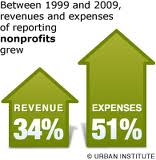 “I laughed at the Lorax, “You poor stupid guy!
“I laughed at the Lorax, “You poor stupid guy!
You never can tell what some people will buy!”
Business is business!
And business must grow
regardless of crummies in tummies, you know.
— Written my Dr. Seuss in The Lorax
You hear it all the time from for-profit business people, “If you’re not growing, then you’re dying.” If you want proof that this is the mantra of the business community, turn on the news or open your newspaper. Oh heck, just Google it and you’ll find more than you can read.
However, isn’t this also the mantra of the non-profit community? In my almost 20 years of experience, it certainly seems to be. The following are just a few things I constantly hear my non-profit clients saying:
- “Our facility is too small (or too old), and we need to raise money to build a new one to serve more people.”
- “The state just released a new grant RFP, and we should look at expanding programming if we hope to qualify.“
- “We don’t have enough board volunteers and need to add more.“
- “Operating expenses keep rising and we need to add another fundraising campaign or event.“
 So, I guess Dr. Seuss is right again . . . “Business is business!” It must just be a function of human nature, right? Because I see corporate America constantly expanding. I see the non-profit sector doing the same thing. And I may just get sick if I hear one more person rant about the expanding size of government on my television (I probably just need to learn how to use my remote and change the channel.)
So, I guess Dr. Seuss is right again . . . “Business is business!” It must just be a function of human nature, right? Because I see corporate America constantly expanding. I see the non-profit sector doing the same thing. And I may just get sick if I hear one more person rant about the expanding size of government on my television (I probably just need to learn how to use my remote and change the channel.)
There is lots and lots of wisdom in Dr. Seuss’ words and there are lots of directions I could go with my blog post this morning, but it is his last sentence that sticks with me.
I don’t know about you, but I believe “crummies in tummies” is an obvious reference to:
- stress
- anxiety
- uncertainty
I think he is saying the idea of growth is a force at work at all times in our organizations, and it is likely a stressor. While I believe this to be true, I’m choosing to look at this as a clarion call rather than a truism. I think the good doctor is making the case for . . .
PLANNING
In my experience, non-profit organizations who plan for growth don’t have many “crummies in tummies.” And I’m not just talking about developing one plan . . . those organizations have many plans including:
- Strategic plan
- Long term plan
- Business plan
- Resource development plan
- Board Development plan
- Compensation & Benefits Plan
- Program plan
- Marketing plan
- Crisis communications plan
- Succession plan
 I know that many people look at this list and immediately reject it, but if Dr. Seuss is right and “Business is business! And business must grow” then change is inevitable inside of our organizations. And if change is inevitable, then why put on a blindfold and take the proverbal steering wheel of your organization?
I know that many people look at this list and immediately reject it, but if Dr. Seuss is right and “Business is business! And business must grow” then change is inevitable inside of our organizations. And if change is inevitable, then why put on a blindfold and take the proverbal steering wheel of your organization?
If this post intrigued you but you’re not sure how or where to start, you might want to check out a few of these resources I recently found online:
- SCORE: “Business Planning Tools for Non-Profit Organizations — Second Edition“
- The Bridgespan Group: “Sample Nonprofit Business Plans“
- National Council of Nonprofits: “Strategic and Business Planning for Nonprofits“
Of course, if you are looking for an external consultant and partner to help your agency with facilitating you plan, I know of someone who might be willing to help. 😉
I am feeling whimsical this morning. So, please scroll down and use the comment box below to share what this Dr. Seuss quote inspired you to think about this morning. Your thoughts and experiences are appreciated and will likely help inspire other non-profit professionals and volunteers reading this blog.
Here’s to your health!
Erik Anderson
Founder & President, The Healthy Non-Profit LLC
www.thehealthynonprofit.com
erik@thehealthynonprofit.com
http://twitter.com/#!/eanderson847
http://www.facebook.com/eanderson847
http://www.linkedin.com/in/erikanderson847

 Exercise: What seat(s) on the bus do you want to sit?
Exercise: What seat(s) on the bus do you want to sit? Tool: The Matrix Map
Tool: The Matrix Map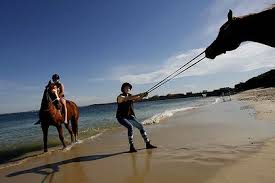 I believe it is a basic truism that you can’t make people do anything they don’t want to do. Every example I can think of ends up not working.
I believe it is a basic truism that you can’t make people do anything they don’t want to do. Every example I can think of ends up not working.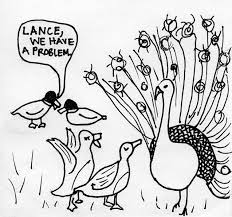 Board Development
Board Development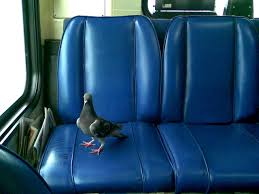 Resource Development Plan
Resource Development Plan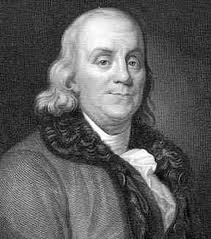 This entire week we’ve been looking back upon 2011 for major trends, and then looking forward to 2012 with an eye towards making a few predictions. Today’s post speaks to a fundraising prediction that has been true every year since the birth of our country more than 235 years ago:
This entire week we’ve been looking back upon 2011 for major trends, and then looking forward to 2012 with an eye towards making a few predictions. Today’s post speaks to a fundraising prediction that has been true every year since the birth of our country more than 235 years ago: There is also a great
There is also a great  Earlier this week, I found myself walking into a title company to interview a donor for a client. As I walked into the office building, I noticed the following things:
Earlier this week, I found myself walking into a title company to interview a donor for a client. As I walked into the office building, I noticed the following things: I walked away from the conversation thinking this was a unique, fun and quirky business practice. I also came to understand that this business practice was a genius idea on so many different levels:
I walked away from the conversation thinking this was a unique, fun and quirky business practice. I also came to understand that this business practice was a genius idea on so many different levels: As I walk down the driveway of an 80-something-year-old donor, he starts sharing a story with me about a skunk that appeared in his very nice and upscale neighborhood.
As I walk down the driveway of an 80-something-year-old donor, he starts sharing a story with me about a skunk that appeared in his very nice and upscale neighborhood. Happy Friday morning, DonorDreams blog readers! I owe you an apology because I missed my mark yesterday and didn’t publish a post. I had good intentions, but my day started fast and snowballed unexpectedly from that point onward. Needless to say, I didn’t even have time to reach into my bag of guest bloggers and share something from them with you. So, I’m going to rectify my Thursday mistake with a Friday morning bonus.
Happy Friday morning, DonorDreams blog readers! I owe you an apology because I missed my mark yesterday and didn’t publish a post. I had good intentions, but my day started fast and snowballed unexpectedly from that point onward. Needless to say, I didn’t even have time to reach into my bag of guest bloggers and share something from them with you. So, I’m going to rectify my Thursday mistake with a Friday morning bonus. I had an interesting chat today with a new client who told me their last grant writer didn’t have any luck using a costly search engine tool for finding new foundations. After a year, they ended the contract on the search engine and now he is no longer with the organization. The moral of this story? Tools don’t make the worker…the worker must really know how to get the most from their tools.
I had an interesting chat today with a new client who told me their last grant writer didn’t have any luck using a costly search engine tool for finding new foundations. After a year, they ended the contract on the search engine and now he is no longer with the organization. The moral of this story? Tools don’t make the worker…the worker must really know how to get the most from their tools. When I graduated college with my masters degree in Urban Planning in 1994, our country was still emerging from a small recession (you know the once that propelled Bill Clinton into the White House). Needless to say, government jobs in urban planning offices across America were still in short supply, and there were many people with much more experience waiting in line for jobs ahead of me. It was this economic dynamic that forced me to innovate, changing my job search parameters and propelling me into the non-profit sector.
When I graduated college with my masters degree in Urban Planning in 1994, our country was still emerging from a small recession (you know the once that propelled Bill Clinton into the White House). Needless to say, government jobs in urban planning offices across America were still in short supply, and there were many people with much more experience waiting in line for jobs ahead of me. It was this economic dynamic that forced me to innovate, changing my job search parameters and propelling me into the non-profit sector. I loved working for the Boy Scouts because I learned so much including:
I loved working for the Boy Scouts because I learned so much including: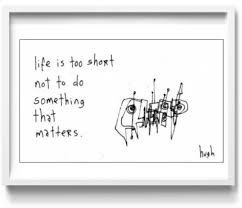 Look into your heart and understand your passions
Look into your heart and understand your passions